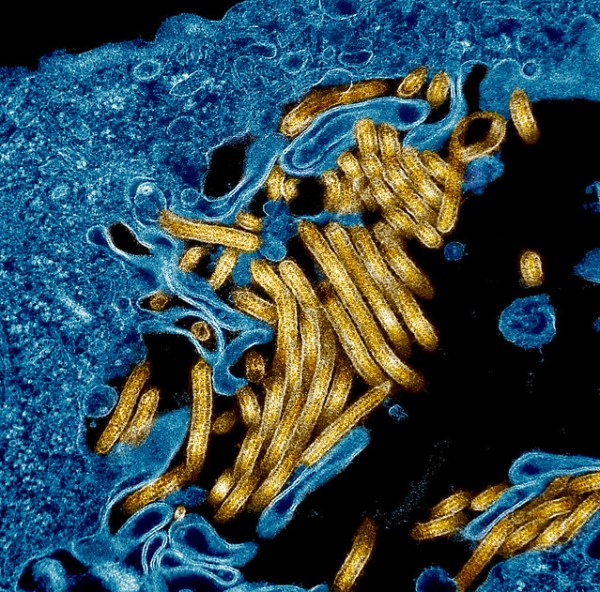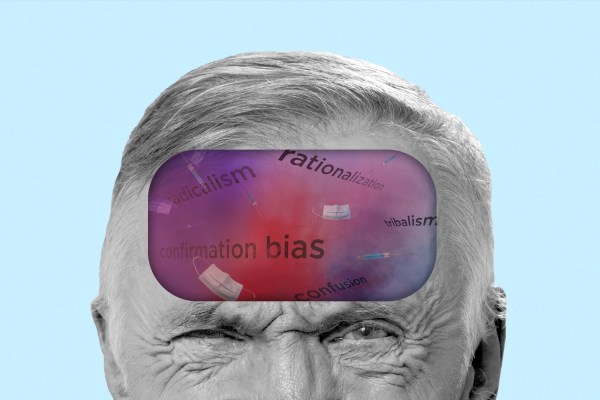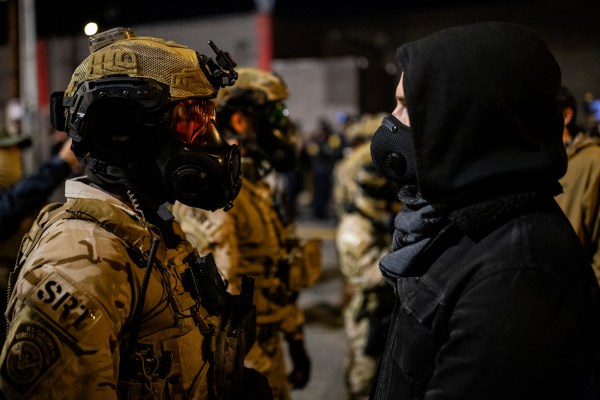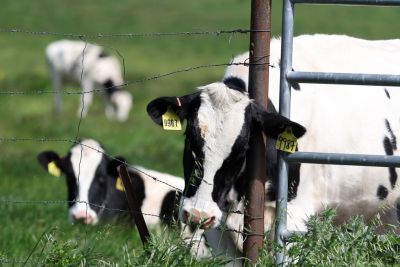Happy Friday! We’d like to take this opportunity—if he doesn’t nix this when he edits this newsletter at 5 a.m. this morning—to wish Declan a very happy birthday!
We’re not sure what it portends for his upcoming year that the cake we got for him at a Dispatch summer cook-out on Thursday night ended up mostly on Jonah’s shoe after someone—who shall remain nameless—dropped it:

Quick Hits: Today’s Top Stories
- The Supreme Court on Thursday ruled unanimously against the Alliance for Hippocratic Medicine (AHM) in the group’s bid to restrict access to the abortion drug mifepristone, access to which AHM believes was improperly expanded by the Food and Drug Administration (FDA). The court found that the plaintiffs lacked the legal right—known as standing—to bring the challenge against FDA regulations regarding the drug’s use. “A plaintiff’s desire to make a drug less available for others does not establish standing to sue,” Justice Brett Kavanaugh wrote in the opinion. “The plaintiffs may present their concerns and objections to the President and FDA in the regulatory process, or to Congress and the President in the legislative process. And they may also express their views about abortion and mifepristone to fellow citizens, including in the political and electoral processes.”
- The Supreme Court also unanimously rejected a free speech claim to trademarking the phrase “Trump Too Small,” holding that the First Amendment does not cover trademarking someone’s name. The justices also ruled in favor of Starbucks in a case involving the firing of seven employees during a unionization effort, rejecting a lower court’s ruling that was deferential to the National Labor Relations Board and its ability to order employers to reinstate fired employees pending a review of their dismissal. Eight justices joined the opinion of the court in the latter case, authored by Justice Clarence Thomas, and Justice Ketanji Brown Jackson wrote a separate opinion concurring with the judgment but dissenting in parts from the reasoning.
- After months of negotiations, leaders of the Group of Seven—consisting of the U.S., Germany, France, the U.K., Japan, Canada, and Italy—agreed to a plan in principle on Thursday to use frozen Russian assets to back a $50 billion loan to Ukraine. The details of the plan have yet to be finalized but appear to involve issuing a loan to Ukraine insured against the interest on the Russian assets. “The simple proposition is, we have to put these assets to work,” U.S. National Security Adviser Jake Sullivan said yesterday. “The complex proposition is, how do we do that specifically? I think we are on the verge of a good outcome here.”
- Russian prosecutors on Thursday announced the indictment of Wall Street Journal reporter Evan Gershkovich—who has spent more than a year in Russian prison—on baseless espionage charges, which could carry a prison term of up to 20 years. The State Department officially classifies Gershkovich as “wrongfully detained,” and both he and the Journal have vigorously denied any allegations of wrongdoing. The indictment sets the stage for a trial in the coming weeks, though espionage cases in Russia are often tried in secret.
- The Bureau of Labor Statistics reported on Thursday that the producer price index (PPI)—a measure of what suppliers and wholesalers are charging customers—declined 0.2 percent month-over-month in May after increasing 0.5 percent in April and falling 0.1 percent in March. Producer prices were up 2.2 percent year-over-year in May, but the monthly decline was unexpected: Economists had predicted a 0.1 percent increase for May, offering another indicator of receding inflation following Wednesday’s Consumer Price Index report.
- The Justice Department released a report on Thursday compiling the findings of its nearly three-year investigation into the Phoenix, Arizona, police department that stemmed from abuse allegations from 2016 to 2022. The investigation found that the department regularly violated federal law and constitutional protections for residents, including using excessive force, making unlawful arrests, and discriminating against minority populations. “There is reasonable cause to believe that the City of Phoenix and the Phoenix Police Department engage in a pattern or practice of conduct that deprives its residents and visitors, including Black, Hispanic and Native American people, of their rights under the Constitution and federal law,” Attorney General Merrick Garland said in a statement. City officials said they are “taking all allegations seriously and are planning to review this lengthy report with an open mind.”
Breaking Down the Bird Flu

What do sea lions in South America and dairy cows in Texas have in common?
Potentially a lot—we’re not zoologists. But lately? Bird flu.
The ongoing outbreak of the H5N1 strain of avian influenza virus that has been around for decades recently made the jump to dairy cows. The surprising development has sparked not only the standard—if low-grade, at this point—concerns about an epidemic or pandemic of avian flu in humans but also worries about the integrity of dairy, beef, and poultry products in the United States. Still, the disease itself currently seems to represent a very low risk to humans.
Avian influenza is a type of flu that circulates primarily in—you guessed it—birds. Migratory flocks carry the illness around the world and sicken other animals, particularly scavengers, that come into contact with infected feces or with dead birds. Bird flu often crops up on poultry farms, and this particular strain has affected almost 100 million birds in more than 1,000 flocks in 48 states since an outbreak of H5N1 was declared in February 2022. (It was this ongoing outbreak that temporarily sent the price of eggs to the moon in late 2022.)
The sheer amount of disease in birds has been particularly high in recent months, leading to more sickened and dead fowl—and more opportunities for the virus to spread not only to more birds, but more species. That includes mammals like sea lions in South America—at least 24,000 of which died last year from the disease this fall and winter—and, indeed, cows.
H5N1 made the leap from migratory birds and chickens to cows earlier this year, and has since spread to more than 90 herds in roughly a dozen U.S. states. The illness first showed up in cattle on Texas ranches and dairy farms in early February, but it took weeks to diagnose because bird flu is not in the standard kit of diseases that farmers, ranchers, and vets typically see in cows. Plus, the flu was making the herds ill—mostly affecting cows’ milk production—but not killing them, as it does birds. Still, Reuters reported that a handful of cows in South Dakota, Michigan, Texas, Ohio, and Colorado have died or were killed by farmers when they didn’t recover.
Recent data from the Department of Agriculture suggests that there are multiple ways the virus could be spreading from farm to farm. The leading culprits seem to be equipment shared between facilities, as well as people who work at more than one farm and carry the virus with them on clothes or shoes. The physical movement of cows from one farm to another is also a likely vector.
The H5N1 virus isn’t particularly new—it’s been circulating for almost three decades after it was first discovered in China around 1996—and it can infect humans. Between 2003 and 2021, the World Health Organization (WHO) recorded nearly 900 reported cases of the disease in humans across 19 countries, of which roughly half were fatal. But we shouldn’t necessarily read too much into that fatality rate since we don’t know the true denominator—the number of people who were actually infected. Plenty of people may never have been tested or had symptoms so minor they didn’t register. “Is the mortality rate really 52 percent? No, it’s not,” Isaac Bogoch, a tropical disease doctor and researcher at the University of Toronto, told TMD. “We’re only selecting for the sickest of the sick.”
The Centers for Disease Control and Prevention (CDC) has so far confirmed only three cases in people in the U.S., two of whom are in Michigan, where testing has been the most robust of all the states with outbreaks. All three are dairy farmers who contracted the virus from interactions with infected dairy cows. Two patients presented with conjunctivitis—pink eye, likely from contact with contaminated milk—while another had the more classic symptoms of a respiratory illness, and all three seem to have recovered.
But three human infections could be an undercount. “That number is very likely to be much higher than three,” Bogoch said. “Think about the number of infected herds that we know of. Think about the number of infected herds that we don’t know of in multiple states. Think about the number of people who have close contact with dairy cows on a day-to-day basis, and there’s only three reported human cases? Give me a break.”
The CDC currently advises doctors to administer the standard seasonal flu test to people concerned they may be infected with the H5N1. But that test can’t confirm if a person has bird flu specifically, so the CDC urges doctors to send results to a state public health laboratory if someone has been in contact with poultry or cows. The most recent data available, from earlier this month, says only 45 people “have been tested as part of this targeted, situation-specific testing.”
Testing both cows and people in contact with them is voluntary—and the incentives are weak for both dairy farmers and staff to do so. Cows are expensive to raise, and infections in cows seem to be fairly mild, generally. Unlike in poultry, where the H5N1 virus can kill an entire flock—incentivizing farmers to isolate and cull—“there is not the same incentive at the level of the farm, or frankly, at the level of the state, to push forward an aggressive surveillance strategy,” Krishna Udayakumar, director of the Duke Global Health Innovation Center, told TMD. “They’re trying to balance economic and health implications jointly.”
Likewise, many of the farm workers in close contact with poultry or cattle may lack insurance, paid sick leave, or be working illegally, disincentivizing getting tested using the standard influenza test.
Even if there are more human bird flu patients in the U.S. than the three people currently identified, the CDC still assesses that the disease to people is of low risk—and that there doesn’t seem to be human-to-human transmission of the virus, unlike the common seasonal flu, or COVID-19, that can run through schools, offices, and families like wildfire when someone sneezes or coughs.
But that doesn’t mean there will never be human-to-human transmission. As we learned all too well in recent years, the more a virus spreads, the more it mutates—and those mutations could change the way it behaves, potentially increasing the likelihood that the virus gets better at human-to-human transmission. “Every day that we’re starting to see more infections, more herds of cattle, more states are more opportunities for this virus to continue to mutate,” Udayakumar said. “So the challenge continues to be if we don’t have extensive surveillance data, we may not catch signals of changes in the virus and exposure by either other animals or humans early enough that we can move aggressively in that response.”
If you’re not going to get it from another person, and you don’t spend any time around cows, there could be other vectors of the virus—though the data is still unclear. The Food and Drug Administration (FDA) sent a letter to health officials across the country last week warning of the potential for infection through “raw,” or unpasteurized milk. Pasteurized milk has been heated to kill bacteria—the gallon you find on most grocery store shelves. But raw milk, straight from the cow, has been having something of a moment with lefty hipster foodies and, even more recently, people on the anti-establishment right.
But drinking raw milk could pose a health risk. “Evidence demonstrates that cattle infected with the HPAI H5N1 virus shed the virus in their milk,” the FDA letter reads. “Because raw milk has the potential to contain viable (live) HPAI H5N1 virus, it represents a potential route of consumer exposure to the virus.” But, the FDA pointed out, it’s not a sure thing: “Based on the limited research and information available, we do not know at this time if the HPAI H5N1 virus can be transmitted to humans through consumption of raw milk and products made from raw milk from infected cows.” An epidemiological study in March suggested that several domestic cats that died on a dairy farm could have been infected with H5N1 after drinking unpasteurized cow’s milk. Beef on grocery store shelves doesn’t seem, at this point, to be a vector for the illness.
There’s good news about a vaccine, should we ever need it: The U.S. has a stockpile of two flu vaccines that seem likely to be effective against H5N1 and could be given to prevent an initial wave of infections as production of new vaccines ramped up in the still unlikely event of an epidemic or pandemic outbreak. “We shouldn’t be in a panic in any of this,” Udayakumar told TMD. “I think the risk, of course—which is a low-probability risk—is that we end up having to deal with another pandemic and one that could be significant in its impact to human health. And we’re not close to that.”
Worth Your Time
- Writing for America Magazine, Emma Camp argued that more people should attend church—even if they don’t believe in God. “At a time when Americans—especially young Americans—are more atomized than ever, having not just individual friends but a real community is increasingly difficult,” Camp wrote. “Becoming part of a religious institution also allows members to get outside of their own age-segregated bubbles. After Mass, I can count on talking to elderly parishioners and hearing the babbles of babies and toddlers—something that would be unlikely to happen at a bar or concert. A religious community forces you to become the kind of person who shows up. Your life gains a new rhythm, with new obligations. … Despite my regular church attendance for almost two years now, I still haven’t developed a rock-solid faith. I’ve joked—and said as much on Twitter—that I only believe in God about 30 percent of the time on a good day. My ambivalence does set me apart from most of my friends from church, a group that includes a few seminarians. But it doesn’t keep me from coming back.”
- U.S. policy in Africa is a confusing mess, Michael Shurkin—a former member of the National Security Council—wrote for his substack, Pax Americana. “U.S. policy consistently has been torn between two competing imperatives,” he explained. “One is finding ways to promote ‘values’ and democracy and, ideally, step away from backing or just appearing to back autocratic and usually kleptocratic governments. The other is the pursuit of ‘realist’ or using realist means to achieve national security priorities such as counterterrorism or Great Power Competition. The two imperatives are not necessarily in contradiction, but they often are, and the result of an inability to decide between prioritizing the one over the other leads to incoherence, inconsistency, and, as we have seen, failure. This is not an argument for one imperative over the other, but rather an argument in favor of deciding between the two, or, in lieu of that, thinking realistically about how to strike a middle path that somehow satisfies both while being cognizant of the dilemma. That would be difficult, but I’d like to think not impossible.”
Presented Without Comment
Milwaukee Journal Sentinel: Donald Trump Calls Milwaukee ‘A Horrible City’ Weeks Before RNC Comes To Town
Also Presented Without Comment
Newsweek: Video Shows Israel Using Trebuchet to Fire Flaming Projectile at Hezbollah
Also Also Presented Without Comment
New York Magazine: RFK Campaign Spells ‘United States’ Wrong on Ballot Petition
In the Zeitgeist
This week, the Wall Street Journal profiled the action star of the summer, who is debuting in her first leading film role next month: 94-year-old June Squibb. The actress commands the screen in Thelma, a movie about a grandmother scammed out of $10,000 who takes matters into her own hands to get it back. The movie “draws motivation from a Mission: Impossible movie, taking cues from Tom Cruise as she sets out to reclaim her 10 grand.” You go, June.
Toeing the Company Line
- In the newsletters: Mike and Sarah explained what Hunter Biden’s conviction means for the elder Biden’s re-election and Will looked into the economic repercussions—and possibilities—of artificial intelligence.
- On the podcasts: Sarah is joined by Steve and Jonah on The Dispatch Podcast roundtable to discuss the Hunter Biden conviction, Republican confusion over IVF, and how much Biden’s age matters.
- On the site: Kevin tries to extend some grace to Hunter Biden: “A better sort of man would pray for Hunter Biden because there was some fine thing in him that moved him to do it. I’ll say a prayer for him because I am supposed to.”
Let Us Know
There have long been stories about new viral strains that never end up amounting to much. Do you read these stories any differently now after our experience of the last few—well, you know?








Please note that we at The Dispatch hold ourselves, our work, and our commenters to a higher standard than other places on the internet. We welcome comments that foster genuine debate or discussion—including comments critical of us or our work—but responses that include ad hominem attacks on fellow Dispatch members or are intended to stoke fear and anger may be moderated.
With your membership, you only have the ability to comment on The Morning Dispatch articles. Consider upgrading to join the conversation everywhere.